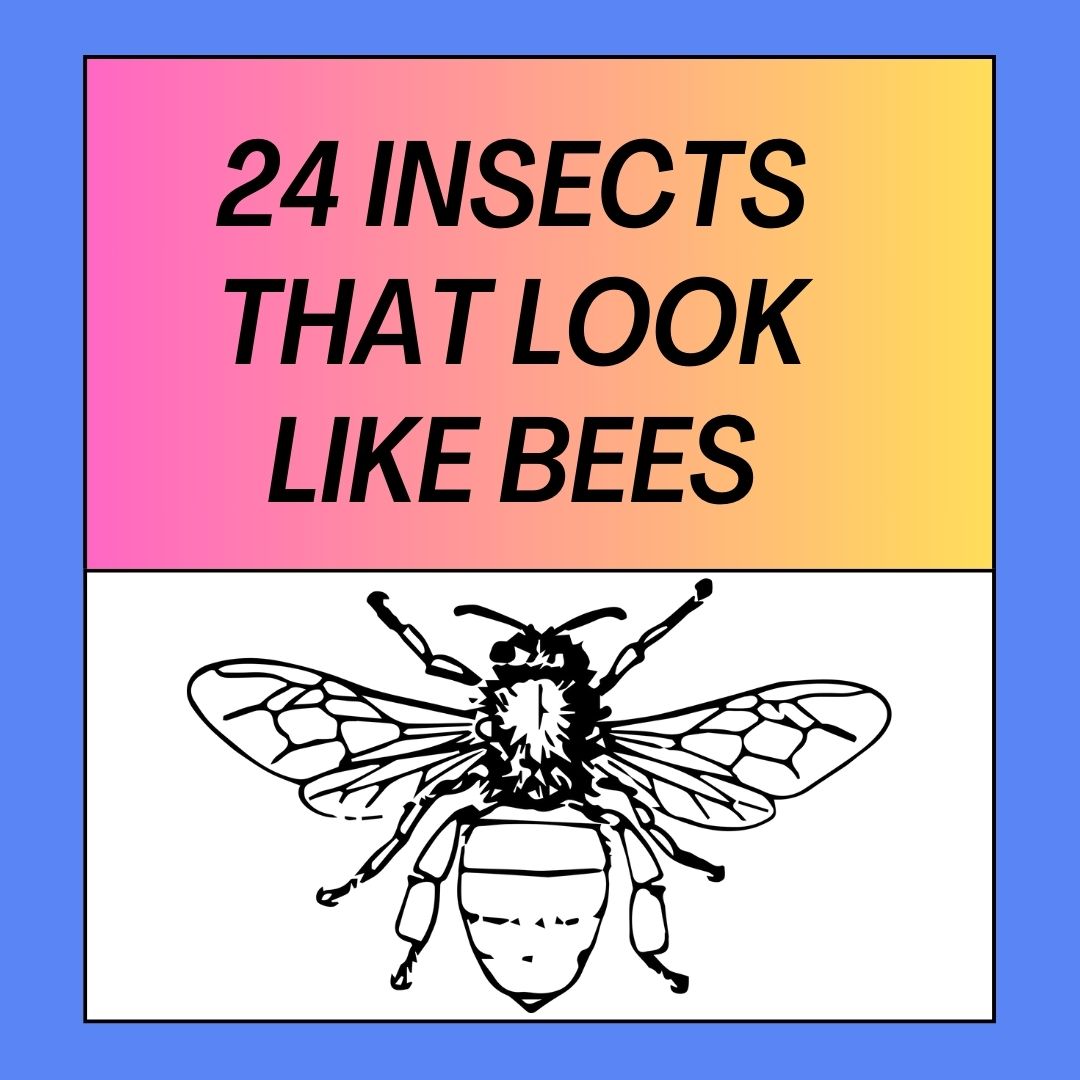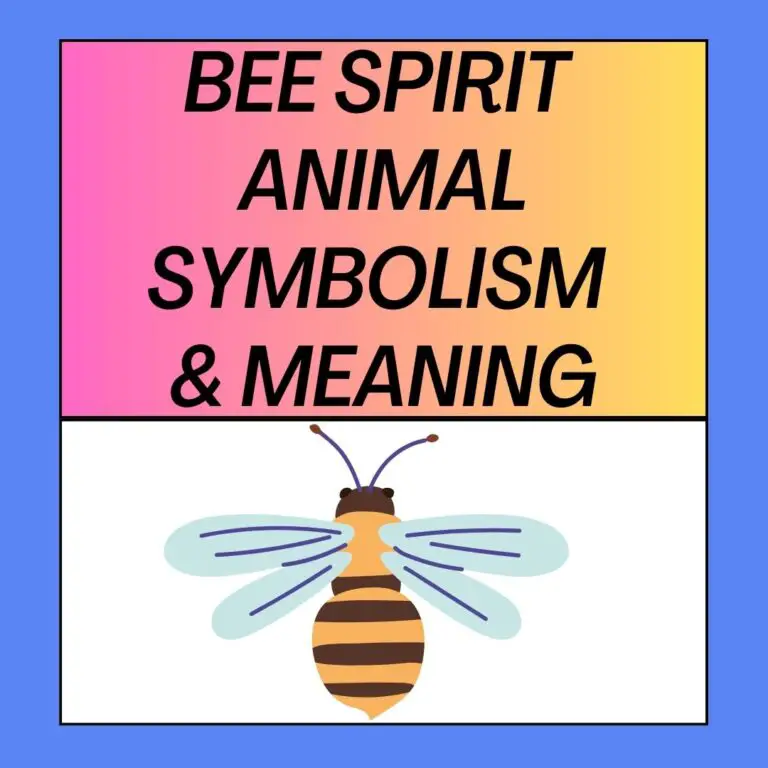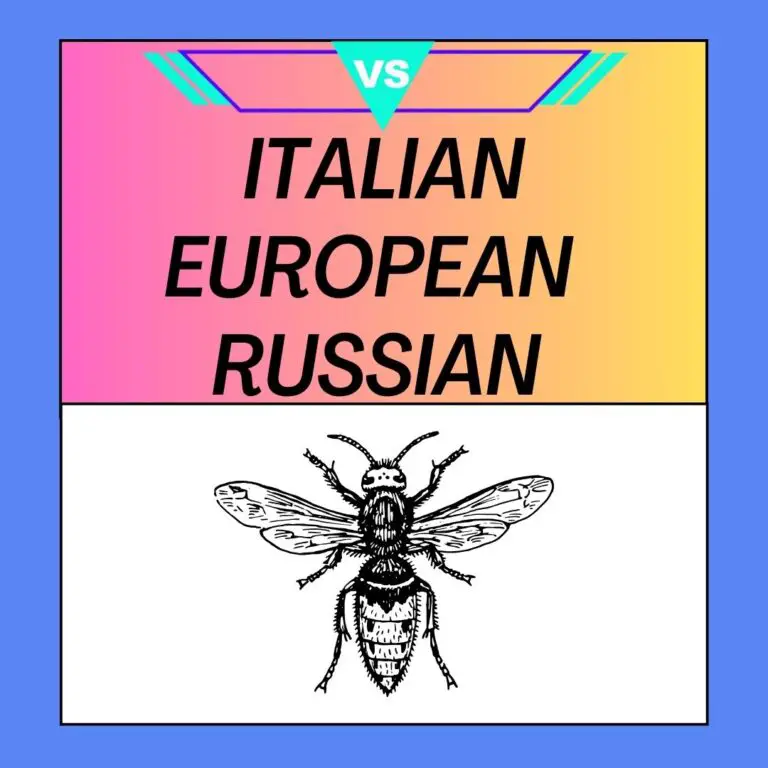
Bees are remarkable creatures for their vital role in pollination and honey production. They are also recognized for their distinctive appearance, plump bodies, vibrant colors, and fuzzy exteriors. However, numerous other insects closely resemble bees, often adopting their appearance as a form of protection, known as mimicry. In this article, we’ll explore 24 insects that mimic bees for camouflage, protection, or other evolutionary reasons.
1. Carpenter Bees (Xylocopa spp.)
- Appearance: Carpenter bees look similar to bumblebees, with robust bodies covered in dense hair. They are typically large and can range in color from black to shiny blue or green.
- Distinguishing Features: They are often distinguished by their habit of drilling into wood, creating tunnels for nesting.
2. Mason Bees (Osmia spp.)
- Appearance: Mason bees are small, usually metallic blue or green, with a relatively hairless appearance.
- Distinguishing Features: Mason bees are solitary and build their nests in pre-existing cavities, often using mud to construct partitions within the nests.
3. Wasp (Family Vespidae)
- Appearance: Many wasps resemble bees in terms of their body shape, but they can vary widely in size and coloration.
- Distinguishing Features: Wasps have more elongated bodies and a narrower waist than bees. They are often more brightly colored, such as yellow and black, like yellowjackets.
4. Hover Fly (Family Syrphidae)
- Appearance: Hover flies, also known as flower flies, mimic bees and wasps with their colorful bands of yellow and black.
- Distinguishing Features: Their distinctive feature is the ability to hover in place while in flight.
5. Yellowjacket (Vespula spp.)
- Appearance: Yellowjackets are similar in size and coloration to some bees, with alternating yellow and black bands.
- Distinguishing Features: They have a more slender waist than bees and are often more aggressive.
6. Sweat Bees (Family Halictidae)
- Appearance: Sweat bees come in various colors, including metallic green, blue, or brown, and they are often smaller than honeybees.
- Distinguishing Features: They are known for being attracted to human sweat.
7. Paper Wasp (Polistes spp.)
- Appearance: Paper wasps have a similar body shape to some bees, with a slender, elongated body.
- Distinguishing Features: They build distinctive paper-like nests, often suspended from eaves or branches.
8. Bald-faced Hornet (Dolichovespula maculata)
- Appearance: Bald-faced hornets have a robust body with a predominantly black color and white facial markings.
- Distinguishing Features: They are social wasps known for their large, football-shaped nests.
9. Eastern Cicada Killer (Sphecius speciosus)
- Appearance: Eastern cicada killers are large, solitary wasps that resemble large bumblebees.
- Distinguishing Features: They are known for their habit of hunting cicadas to provision their nests.
10. Leafcutting Bees (Megachilidae)
- Appearance: Leafcutting bees often have a similar body shape to honeybees but can vary in color.
- Distinguishing Features: These solitary bees use cut leaf fragments to construct their nests.
11. Hornets (Genus Vespa)
- Appearance: Hornets, like yellowjackets, have a similar size and coloration to bees but are generally larger.
- Distinguishing Features: They are social wasps known for their potent stings and large nests.
12. Bee Fly (Family Bombyliidae)
- Appearance: Bee flies have a fuzzy, bee-like appearance with a distinctive, long proboscis.
- Distinguishing Features: They are known for their parasitic habits, laying eggs in the nests of solitary bees.
13. Eastern Carpenter Bee (Xylocopa virginica)
- Appearance: Eastern carpenter bees are large and robust, similar to bumblebees, with a shiny black coloration.
- Distinguishing Features: They nest in wood, creating circular entrance holes.
14. Bombus lucorum
- Appearance: Bombus lucorum is a bumblebee species with a predominantly white coloration.
- Distinguishing Features: They are known for their distinctive yellow collar.
15. Potter Wasp (Family Vespidae)
- Appearance: Potter wasps are wasp-like in appearance, with a slender body and often brightly colored patterns.
- Distinguishing Features: They are named for their habit of building vase-shaped nests out of mud.
16. Narrow-Waisted Hymenopterans
- Appearance: These insects have a slender, wasp-like waist and can resemble some bee species.
- Distinguishing Features: They belong to various families, including the Ichneumonidae and Chalcididae.
17. Early Bumblebee (Bombus pratorum)
- Appearance: Early bumblebees are small and relatively slender, with a yellow and black coloration.
- Distinguishing Features: They are known for their early emergence in the spring.
18. Bee Beetle (Trichius fasciatus)
- Appearance: Bee beetles have a round, bee-like shape and are often covered in dense hairs.
- Distinguishing Features: They are known for their mimicry of bees and for being flower pollinators.
19. Drone Fly (Eristalis tenax)
- Appearance: Drone flies closely resemble honeybees, with a similar body shape and coloration.
- Distinguishing Features: They are hoverflies and do not possess stingers.
20. Bombus hortorum
- Appearance: Bombus hortorum is a bumblebee species with a distinctive orange or ginger coloration.
- Distinguishing Features: They are known for their foraging habits on a variety of flowers.
21. Xylocopa violacea
- Appearance: Xylocopa violacea, also known as the violet carpenter bee, is a large bee with a violet-black coloration.
- Distinguishing Features: They are solitary bees known for their wood-boring nesting behavior.
22. Bombus pascuorum
- Appearance: Bombus pascuorum is a bumblebee species with a predominantly ginger coloration.
- Distinguishing Features: They are social bees and forage on a wide range of flowering plants.
23. Tachinid Flies (Family Tachinidae)
- Appearance: Some tachinid flies have a bee-like appearance with a robust body and hairy exterior.
- Distinguishing Features: These flies are parasitoids, with larvae that develop inside other insects.
24. Volucella Bombylans
- Appearance: Volucella bombylans is a hoverfly that closely mimics bumblebees, with similar coloration and size.
- Distinguishing Features: They are known for their bee mimicry and hoverfly behavior.
Summary
In conclusion, these 24 insects showcase the incredible diversity of nature’s mimicry, with many adopting the appearance of bees for various reasons. Whether for protection, pollination, or parasitic habits, these insects remind us of the fascinating world of adaptations and survival strategies in the insect kingdom.






